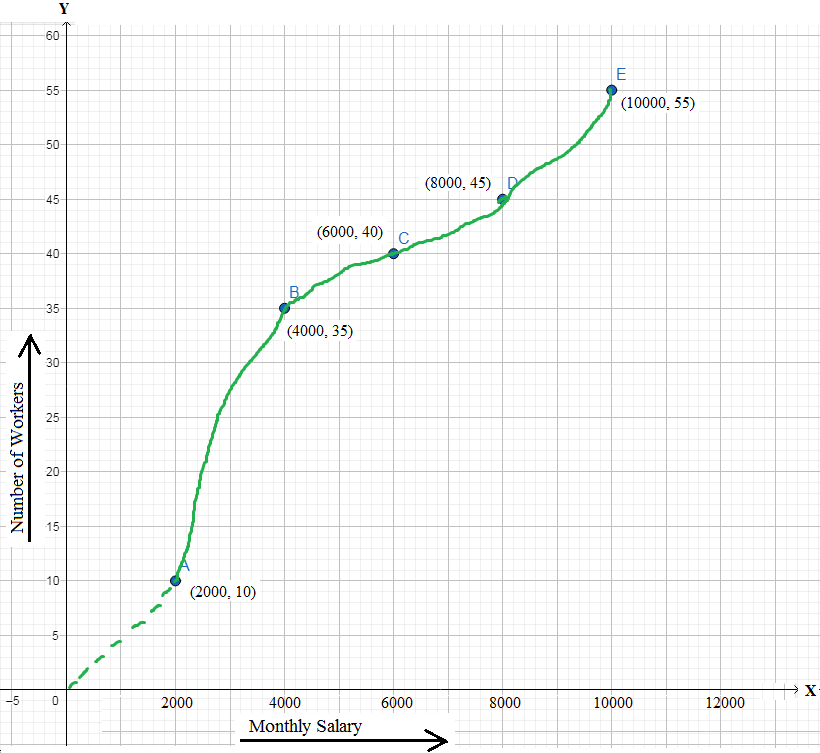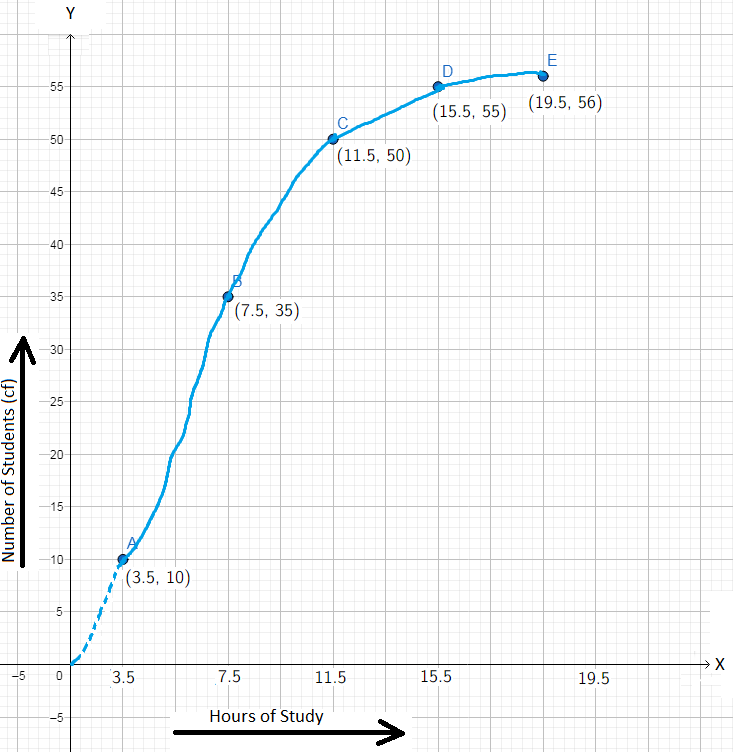Subscribe to our ▶️ YouTube channel 🔴 for the latest videos, updates, and tips.
Problems on Cumulative-Frequency Curve
We will discuss here some of the problems on frequency polygon.
1. The monthly salaries of 55 workers of a factory are displayed in the following ogive.
Answer the following.
(i) How many workers have a monthly salary under $ 4000?
(ii) How many workers have a monthly salary more than or equal to $ 8000 but less than $ 10000?
(iii) Construct the frequency distribution table of the salaries of 55 workers.
Solution:
(i) 35. {Since the point on the ogive has the coordinates (4000, 35) corresponding to the point representing 4000 on the monthly salary axis.}
(ii) 10 (i.e., 55 – 45). {Since, according to the ogive, 55 workers have a salary less than $ 10000 and 45 workers have a salary less than $ 8000.}
(iii)
Monthly
Salary (in $)
Under
2000
Under
4000
Under
6000
Under
8000
Under
10000
Cumulative Frequency
(Number of Workers)
10
35
40
45
55
Therefore, the frequency distribution table of the salaries of 55 workers will be as below.
Monthly
Salary (in $)
0 - 2000
2000 - 4000
4000 - 6000
6000 - 8000
8000 - 10000
Number of Workers
10
25
5
5
10
2. Construct an ogive for the following distribution.
Solution:
Here, the distribution is not continuous. Changing the intervals to overlapping intervals, we get the following cumulative-frequency table.
Hours of Study in a day
Number of Students
(Frequency)
Cumulative Frequency
-0.5 - 3.5
10
10
3.5 - 7.5
25
35
(= 10 + 25)
7.5 - 11.5
15
50
(= 10 + 25 + 15)
11.5 - 15.5
5
55
(= 10 + 25 + 15 + 5)
15.5 - 19.5
1
56
(= 10 + 25 + 15 + 5 + 1)
Taking the upper limit of an interval and its corresponding cumulative frequency as x- and y-coordinates respectively, plot the points (3.5, 10)), (7.5, 35), (11.5, 50), (15.5, 55) and (19.5, 56).
Scale: On the x-axis, 1 cm = 4 hours.
On the y-axis, 1 mm = 1 student
From Problems on Cumulative -Frequency Curve
Didn't find what you were looking for? Or want to know more information about Math Only Math. Use this Google Search to find what you need.




New! Comments
Have your say about what you just read! Leave me a comment in the box below. Ask a Question or Answer a Question.